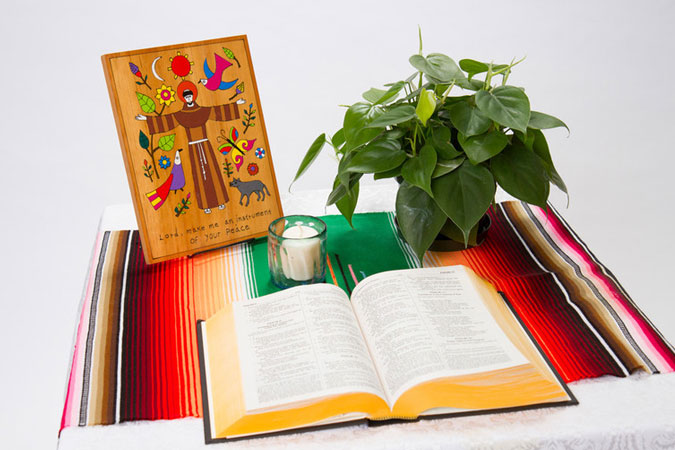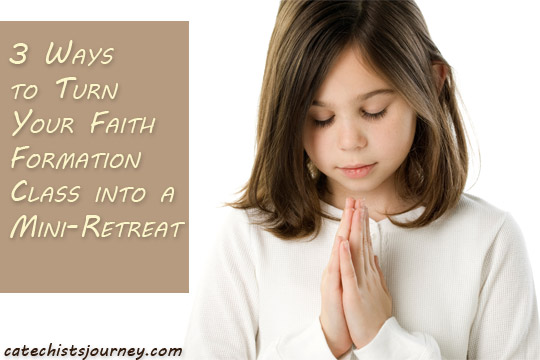
Editor’s Note: This week we’re exploring microshifts we can make as catechists to improve our ministry, inspired by Gary Jansen’s MicroShifts: Transforming Your Life One Step at a Time. Learn more about the book here.
Transformation often comes from small changes, and making these small changes, or MicroShifts, as author Gary Jansen calls them, can improve the faith formation experience for both catechist and young people. Consider how these microshifts can create a retreat atmosphere in the catechetical setting.
Silence
A silent retreat offers the opportunity to quiet oneself to be aware of God’s presence in a way not possible in the noise we’re so often immersed in. While I can’t offer a weekend of silence to young people, a few years ago I started the silence challenge with my seventh-graders during Lent. We’d begin each session with 40 seconds of silence (for the 40 days of Lent), working our way up to two minutes by the end of the year. The young people at first give me that look of “you want us to do nothing?” but then gradually settled into the silence. I hope it’s a gift in their day to take purposeful time to yes, do nothing, but in a peaceful way that can lead them closer to God.
Setting
Most catechists set up a prayer table in the gathering space, and that’s a wonderful thing to help set the atmosphere as more than a classroom space. Include an open Bible, candles (lit according to parish safety guidelines), a crucifix, and a cloth matching the color of the liturgical season. But beyond the prayer table, other opportunities exist to microshift the setting to more resemble a retreat space. I am in a parish without a school, so my classroom is devoted to religious education, and I am able to display religious posters on all the walls. But even catechists who share classroom space and need more mobile décor can display art prints on a collapsible easel, a small statue of a saint important to the group, or posters that can be hung with magnets on various classroom surfaces with just a few minutes of before-class prep time. Catechetical textbook programs usually come with relevant posters, so seek them out and display them. Orient the classroom toward the crucifix on the wall or prayer table; never hide the prayer space behind the seating area, as that prevents young people from seeing it without turning away attention from the learning space.
Activities
While we catechists take many cues from our textbooks, step away from reliance on read and discuss methods at times to incorporate activities reminiscent of a retreat. A talk sharing a personal story about how faith played a concrete role in life, an extended time of reflective prayer, and exploring Scripture stories from various angles are all retreat-style activities that enhance textbook lessons and can be meaningful experiences for the young people.
I’ve made most of these microshifts to how I approach my sessions already, and I’ve felt more positive about the sessions as a result. I hope making a few more microshifts that foster a retreat-like atmosphere will make my future students feel more positive about the sessions and their faith too.
What small changes, or microshifts, are you committed to making in the new catechetical year?
Read the other posts in the Microshifts for Catechists series here.





Be the first to comment